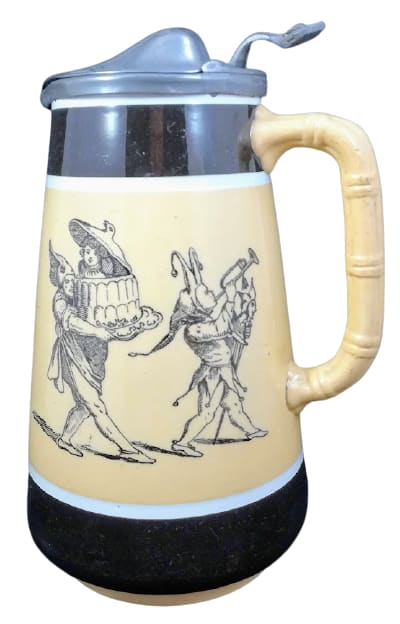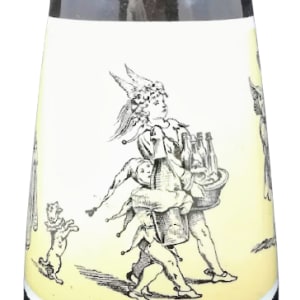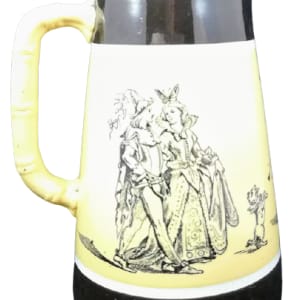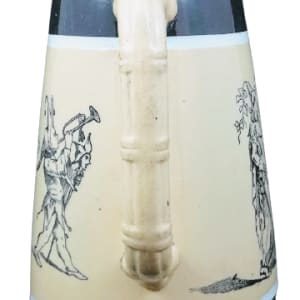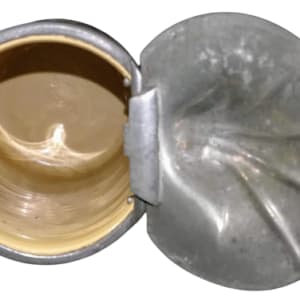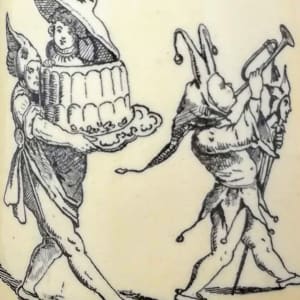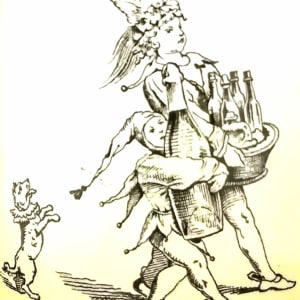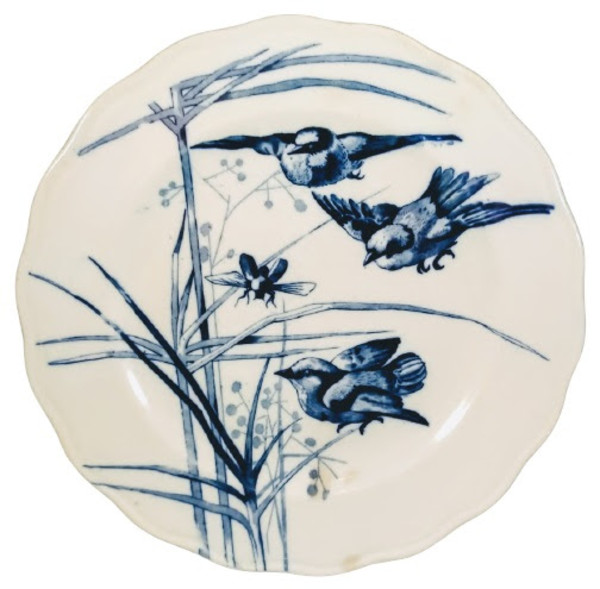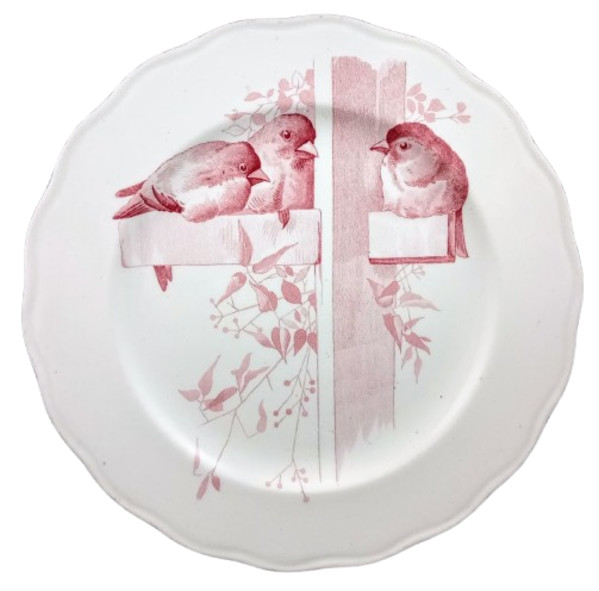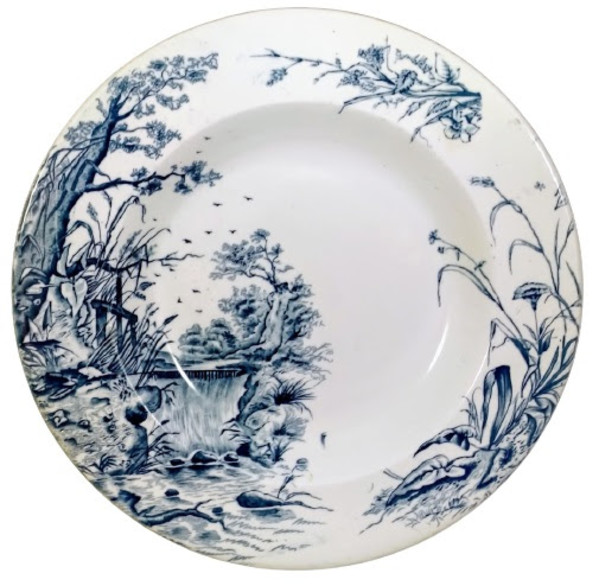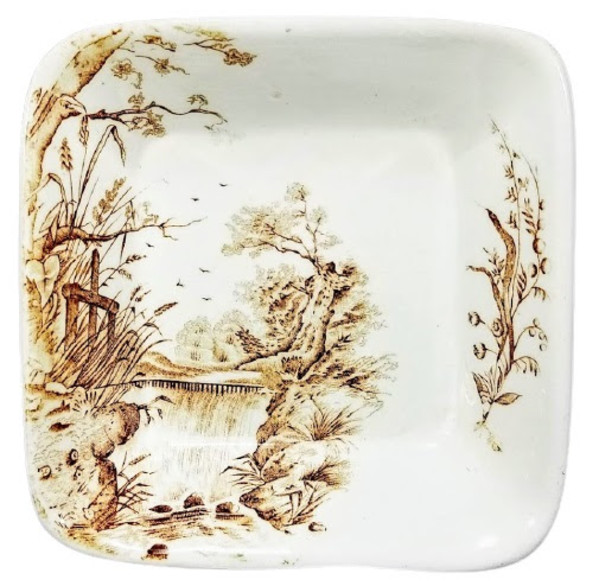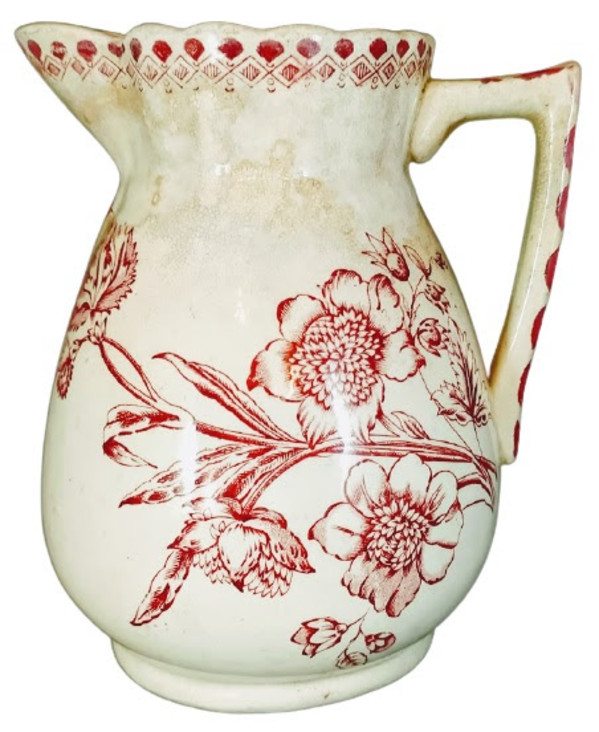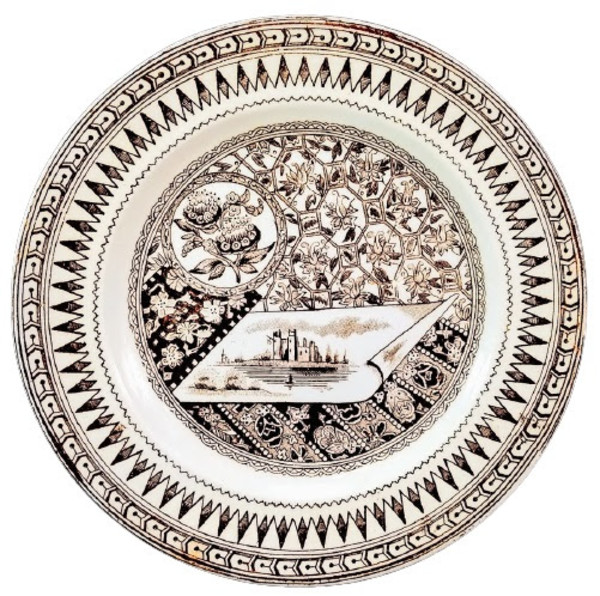- William Brownfield & Son(s)
- Carnival, Rd. 7 February 1877
- Earthenware
- 7 x 4.75 in (17.78 x 12.07 cm)
-
Not For Sale
Lidded jug, 7 x 4.75 inches. Black transfer. Impressed maker's mark for William Brownfield & Son. The impressed 5/76 indicates a manufacture date of May 1876. This pattern features a procession of people in medieval apparel, some dressed like jesters, with one carrying a child or little person in a large covered tureen. The registration date of 7 February 1877 indicates this pattern is part of Brownfield's Medieval Series, but has been documented with a "Carnival" pattern name as well. Carnival is a festive season of the year immediately preceding Lent on the Christian calendar, mostly observed in countries with a large Catholic population. It is a time for parades, parties and masquerades, sort of a "last hurrah" before the abstinence and penitence of the Lenten season. The observation of Carnival dates to the Middle Ages but it is thought to have ties going back even further, to pagan celebrations like Saturnalia and Bacchanalia. The best known example in the United States is the Mardi Gras in New Orleans.
The Brownfields were potters in Cobridge, North Staffordshire from about 1837 to the 1890s. William Brownfield began as a junior partner in the firm of Robinson, Wood & Brownfield, at a pottery formerly owned by Ralph & James Clews. Eventually William Brownfield appears to be the sole owner, the first reference appearing in White’s 1851 directory where we find under china and earthenware manufacturers, Brownfield Wm. Cobridge. The factory produced a range of earthenware, stone china and added stoneware and parian to their productions. In the International Exhibition of 1862 they were awarded a medal for “printed earthenware” but no details are given of the patterns. Entries at other International exhibitions followed.
In 1871 William Etches Brownfield entered the business and it became William Brownfield & Son. William Sr. died in 1873 and William Jr. continued and his brother Edward Arthur Brownfield joined the firm. They continued to make a wide range of ceramics with occasional tour de force pieces for national and international exhibition, becoming one of the top ten Staffordshire factories. The company’s last swansong was an unusual venture fostered by Arthur Edward Brownfield, who in 1892 created a Potter’s Guild based on John Ruskin’s principles. But this “cooperative” was unfortunately destined to failure and the company was wound up in 1900.
- Subject Matter: Aesthetic (Narrative)
- Collections: Aesthetic Transferware, William Brownfield & Son(s)
